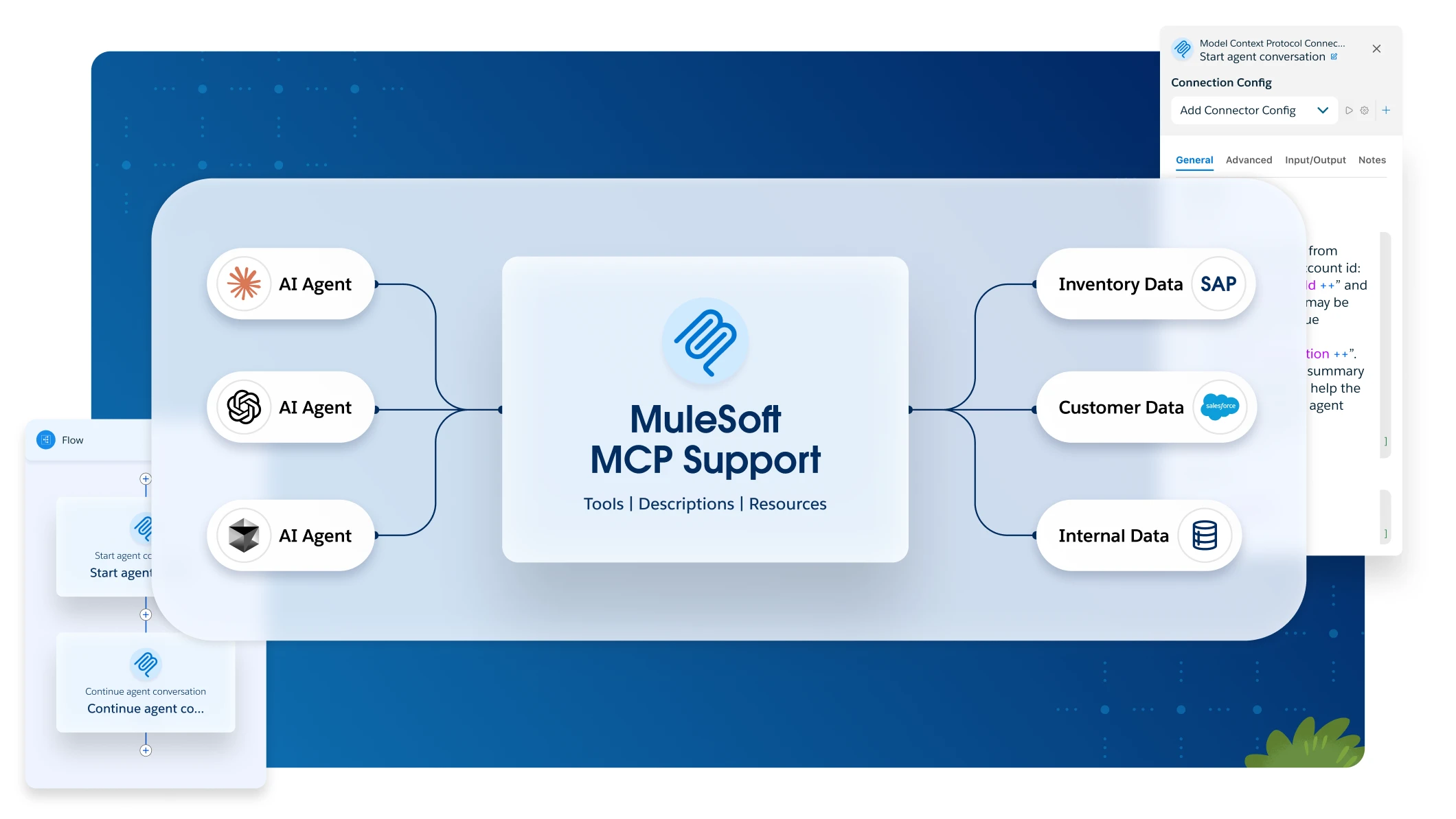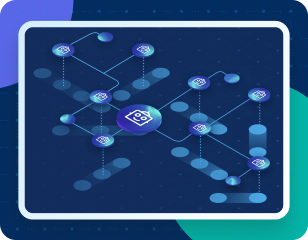APIs have become the digital nervous system of modern enterprises, connecting systems, applications, and users across a vast ecosystem. While MuleSoft provides robust integration and management capabilities, there’s a notable gap when it comes to offering real-time API availability and performance visibility to external consumers.
What we'll cover in this article: We’ll discuss the architectural, operational, and security benefits of building a real-time API status portal for MuleSoft, as well as the current feature limitations in Anypoint Platform. We’ll also cover a design blueprint to empower API producers and consumers alike.
The MuleSoft visibility gap
MuleSoft Anypoint Platform offers rich analytics, logs, and monitoring capabilities for internal teams. However, external API consumers currently lack:
- A public-facing status dashboard for API uptime, latency, and incidents
- Real-time or near-real-time API health indicators
- Planned maintenance schedules or incident resolution timelines
- Ability to subscribe to status updates via Slack, email, RSS, etc.
- Audit trail of past incidents to build long-term trust
This lack of visibility creates friction for API consumers and limits adoption in regulated or high-availability use cases such as e-commerce, financial services, or healthcare. A staggering 73% of organizations cite reliability and uptime as top concerns for third-party API adoption.
Why do you need a dedicated API status portal?
A public-facing API status portal can help enterprises using MuleSoft:
- Build trust with developers: Consumers gain transparency into the health of critical APIs, improving onboarding confidence and reducing support tickets.
- Reduce operational overhead: Proactive communication of incidents reduces dependency on support and incident response teams.
- Enable ecosystem-grade SLAs: With real-time metrics and historical performance, providers can confidently define, track, and enforce API SLAs.
- Enhance security posture: By isolating API health data from internal monitoring tools and presenting sanitized, non-sensitive information, organizations can share status updates without security risks.
Current MuleSoft capabilities vs. ideal portal
| Capability | MuleSoft today | Proposed status portal |
|---|---|---|
| Public API health dashboard | ❌ Not available | ✅ Real-time availability by API |
| Consumer notifications (RSS/Email) | ❌ Not supported | ✅ Multi-channel status alerts |
| Incident tracking and timelines | ❌ Manual via support channels | ✅ Automated status tracking |
| Uptime and latency graphs | ✅ Available in Anypoint Monitoring (internal) | ✅ Simplified public-facing version |
| SLA breach analytics | ❌ Not exposed externally | ✅ Visualized SLA compliance |
| Maintenance schedule publication | ❌ Manual communications | ✅ Pre-planned downtime notices |
Architecture overview
The API status portal would act as a lightweight layer on top of MuleSoft, powered by a combination of:
- MuleSoft Anypoint Monitoring APIs: Pull real-time metrics from CloudHub or RTF-deployed APIs
- Custom logging middleware or sidecar: Intercept request success/failure codes, latency, and error types to feed metrics
- Data store and dashboard layer: Aggregate metrics into a time-series database and render via a secure React-based front-end
- Security layer: Expose only non-sensitive metadata (status, latency, error rate). Hide internal IPs, tokens, or headers
- Notification engine (optional): Use Slack APIs, SendGrid, or AWS SNS for pushing status change alerts
Core components and code snippets
Below are several components along with their respective code snippets.
1. Backend API (Node.js + Express)
This endpoint fetches health data and sanitizes it before sending to the frontend:
// server.js
const express = require('express');
const statusRoutes = require('./routes/status');
const app = express();
app.use('/api/status', statusRoutes);
app.listen(3001, () => console.log('Status API running on port 3001'));
2. Status route with Sanitizer
// routes/status.js
const express = require('express');
const getStatusData = require('../services/mulesoftMonitor');
const sanitize = require('../middleware/securitySanitizer');
router.get('/', async (req, res) => {
const rawData = await getStatusData();
const safeData = sanitize(rawData);
res.json(safeData);
});3. Simulated MuleSoft monitoring feed
Replace this mock with actual CloudHub monitoring API calls:
// services/mulesoftMonitor.js
module.exports = async function getStatusData() {
return [
{
name: 'Orders API',
status: 'Healthy',
uptime: '99.98%',
latency: '110ms',
lastChecked: new Date(),
}
];
};4. Security middleware
Ensure only non-sensitive metadata is exposed:
// middleware/securitySanitizer.js
module.exports = function sanitize(data) {
return data.map(api => ({
name: api.name,
status: api.status,
uptime: api.uptime,
latency: api.latency,
lastChecked: api.lastChecked
}));
};5. Frontend React dashboard
Simple table rendering real-time data:
// App.jsx
useEffect(() => {
axios.get('/api/status').then(res => setData(res.data));
}, []);
return (
<table>
<thead><tr><th>API</th><th>Status</th><th>Uptime</th><th>Latency</th></tr></thead>
<tbody>
{data.map(api => (
<tr key={api.name}>
<td>{api.name}</td>
<td>{api.status}</td>
<td>{api.uptime}</td>
<td>{api.latency}</td>
</tr>
))}
</tbody>
</table>
);Open source repo
The complete source code for this API status portal is available on GitHub. You can fork the GitHub repo and adapt this solution for your own organization. This project is licensed under MIT, welcoming contributions from the community. Please refer to the CONTRIBUTING.md file for guidelines on how to submit bug reports, feature requests, and pull requests. Contributions, stars, and feedback are welcome to help improve the framework for the wider MuleSoft community.
Deployment guide
Deploy the backend API and frontend dashboard on your preferred platform: Heroku, CloudHub, AWS, or Kubernetes. Use environment variables for sensitive configs and enable HTTPS with valid certificates. Implement logging and monitoring to ensure operational excellence.
Security considerations:
- Internal error logs, auth tokens, and stack traces are stripped before exposure.
- Rate limiting and HTTPS should be enforced.
- Add API keys if multi-tenant monitoring is needed.
Benefits to the developer ecosystem
A real-time API status portal becomes a critical trust artifact for partners and developers. It reflects operational maturity and commitment to uptime, creating a competitive edge when onboarding partners or selling APIs.
Moreover, for internal stakeholders like product, legal, and customer success teams, it enables:
- Proactive incident resolution
- Improved contractual SLA tracking
- Audit readiness for compliance needs
Industry-specific use cases
| Industry | Use cases | Benefits |
|---|---|---|
| Retail and e-commerce | Real-time status for product, inventory, and order APIs | – Reduces order failures due to latency and outages – Builds trust with vendors and marketplaces |
| Financial Services | Open banking and payment API monitoring for third-party aggregators | – Enables SLA compliance reporting – Supports regulatory audits with uptime/incident transparency |
| Healthcare and Life Sciences | API status for EHR systems, telehealth, and lab results APIs | – Ensures reliability of patient data exchanges – Aids HIPAA-compliant observability |
| Logistics and Supply Chain | Tracking API status for shipments, warehouse, and customs APIs | – Prevents operational disruptions – Minimizes support load during peak shipping windows |
| Government and Public Sector | Public-facing APIs for citizen services and digital infrastructure | – Builds trust in digital governance – Demonstrates reliability and commitment to transparency |
Future enhancements:
- Integrate with MuleSoft RPA and Ops automation to trigger workflows during incidents
- Enable per-consumer status views via OAuth scopes
- Add API changelogs to communicate breaking changes or version deprecations
- Fork or clone the GitHub repo to start customizing your own API Portal for external customers.
The growing need for API operational transparency
As APIs become products, operational transparency becomes a feature, not just an add-on. While MuleSoft leads in integration and API lifecycle management, this blog demonstrates a clear opportunity to elevate developer trust by exposing operational status in a structured, secure, and scalable manner.
By building an API status portal, organizations fill a critical product gap and demonstrate leadership in reliability, transparency, and developer experience – qualities essential for large-scale API ecosystems.









